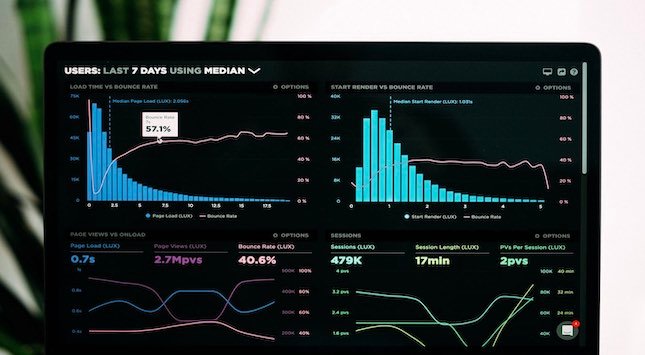Since the pandemic, digital transformation has grown in popularity. Moving from manual or paper-based procedures to automated transactions that supply services to a global market based on cloud and Internet technologies is what digital transformation entails.
When done correctly, business transformation enables companies to pivot with agility based on consumer patterns and desired data analysis. Data you cannot trust puts your reputation and regulatory standing at risk. This article discusses Enterprise Data Management and all that it entails.
What is Enterprise Data Management?
Enterprise data management (EDM) is defined as:
- The capacity to gather, integrate, and analyze massive volumes of data to support choices on governance, product creation and delivery, or how employees accomplish activities.
The shift to cloud-based technology, particularly data lake storage, enables the data collection from any internal application or service and any Internet-based activity (mobile, IoT, video, etc.). - The transformation of corporate data into a continuous flow of information by eliminating various data silos and centralizing data for usage by any product or workstream
- The safe and encrypted development and exchange of information with partners or customers
- The foundation for how every employee or partner collaborates to achieve their personal and the organization’s goals by fostering certainty, confidence, and trust in all data assets.
EDM produces a trustworthy data provenance that can be traced through the lifespan of data origins, destinations, consumption, and maintenance. Tracking data lineage provides insights into how data travels across your systems, helping you to improve corporate decision-making and data management costs.

Enterprise Data Types
Today’s organizations, regardless of size, confront a wide range of issues, the most demanding of which is data management. Data collected and used by businesses daily is often classified into three types:
1. Transactional
This data, for example, time, place, price, discount, and payment methods, help the business’s continuous operations. Transactional data is often maintained and updated within business systems to define data and automate significant sales, customer support, order management, buying, and other procedures.
2. Analytical
These numerical data, metrics, and measures give corporate intelligence and help make decisions. Analytical data is kept in repositories for Online Analytical Processing (OLAP), such as data warehouses and data lakes.
3. Master
Customers, suppliers, workers, stocks, and goods master data in company operations, transactions, and analytics. Master data is typically kept in several systems and shared by numerous users or groups within an organization.
During the technology boom, the massive expansion of data necessitates organizations to put in 200 percent effort to centralize, organize, control, and make it accessible to anybody who needs it. This is the overarching purpose of business data management.

Enterprise Data Management Components
A conventional corporate data management system requires the following components to obtain a single source of truth:
1. Data Governance
Data governance refers to the rules, procedures, and practices put in place by an organization to ensure data integrity, quality, and security. Data governance must be implemented in all departments. These policies will specify how, when, what, and who to enforce the data.
2. Data safety
This component comprises the safeguards and procedures put in place by organizations to secure their essential data assets at all stages of the data lifecycle, including when data is at rest and in transit. Security measures must be implemented and continuously managed to protect the integrity and avoid theft, leaks, and corruption.
3. Data Integration
This is gathering and combining various types of data from multiple sources and repositories (cloud, on-premise, hard drive disk, etc.) for reporting, analysis, or later usage. Besides, this is a challenging element since data flows inside organizations are often scattered.
A robust data integration procedure centralizes data and makes it available to everyone to develop a complete picture of the whole organization.

4. Master Data Management
Master data is the most valuable piece of intelligence that every company possesses. Because it is utilized in various applications, a little error might cause a chain reaction that affects every other system in the same ecosystem.
Effective master data management assists organizations in eliminating silos, avoiding data entry mistakes caused by human inputs, and ensuring data authenticity and timeliness.
5. Metadata management
In formal storage, metadata is “data about other data.” Metadata examples include report definitions, column descriptions, log files, etc. In a nutshell, metadata provides context for the data’s content.
Data becomes challenging to understand, untrustworthy, and often worthless without metadata. Metadata management ensures that metadata is created, stored, integrated, and controlled by set policies across the organization.
6. Data quality control
As the name indicates, quality management ensures that organizations collect the greatest quality data possible. The process begins with acquiring information and continues throughout the dissemination cycle.
Consistent and reliable analysis requires high-quality data. Data quality management is a precondition for developing an effective business dashboard that provides users with a more comprehensive picture of the organization’s performance.

Advantages of Enterprise Data Management
Organizations that prioritize corporate data management guarantee that data is kept securely and is available to users whenever they need it. Enterprise data management provides considerable benefits when the following protocols are followed:
- Obtaining access to high-quality data for analysis
- Ensuring that the data adheres to specified norms and requirements
- Data consolidation from numerous sources for increased efficiency
- Providing a robust and consistent data architecture that can grow with the company
Furthermore, because employees know precisely where to get the data they want, they can complete data analysis and other essential tasks more effectively.
Conclusion
Enterprise data management is a vital component of every firm, and we will witness additional extensions or adaptations of this process in the coming years. Technology will also advance, making the lives of executives easier than now.
Image Source: Unsplash

